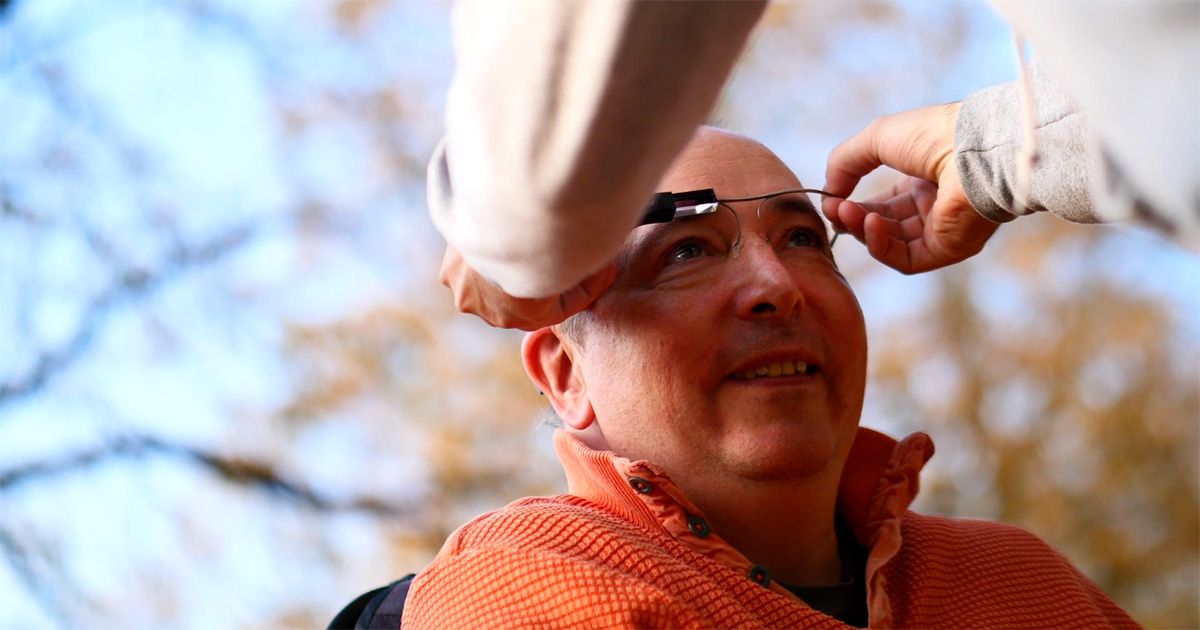April 16, 2025
The Evolution of Head Control

In a world where technology increasingly merges with our daily experiences, head control has evolved from a futuristic concept to a life-changing reality. What was once only seen in science fiction films is now an innovative tool that grants numerous people greater freedom and independence. Particularly in the realm of mobility aids, such as electric wheelchairs, this technology has initiated a revolution—a revolution that we at munevo are proud to significantly contribute to with our munevo DRIVE head control system.
The Vision Begins: Early Beginnings of Head Control
The history of head control dates back to the late 1970s and early 1980s when scientists conducted initial experiments with motion sensors. An early example is the development of the "Ultrasonic Head Control Unit," a project by the Rehabilitation R&D Center in 1982, which first attempted to use head movements to control wheelchairs via ultrasonic sensors. Although the technology was bulky and imprecise at the time, it laid the groundwork for the later development of everyday-use systems.
The first clinically deployed head controls for wheelchairs entered the market in the 1990s. These early models often required conspicuous headgear or reflectors and operated only with very pronounced movements—precision was hardly achievable. Nevertheless, they marked a milestone toward self-determination for many individuals with limited hand and arm function. Systems like the later developed i2i Head Positioning System demonstrated from the 2000s onward how crucial good head positioning is for reliable control.
Parallel to these developments, research was also conducted on brain-computer interfaces. As early as 1988, it was possible to control the movement of a robot using human brain signals—a further significant step toward alternative control systems for people with disabilities.
The Gaming Sector as a Catalyst
A pivotal turning point came through the gaming sector. With the advent of gaming consoles and the pursuit of more immersive gaming experiences, significant resources were invested in developing more precise and user-friendly motion sensors. The Nintendo Wii, with its motion control in 2006, was a milestone, followed by technologies like Microsoft Kinect in 2010, which could capture body movements without a controller. These developments in the entertainment industry provided important technological breakthroughs that later found application in assistive technologies such as head control.
From the Living Room to the Laboratory: Medical Advancements
Insights from the gaming sector were adopted by researchers and further developed for medical applications. In the 2010s, the miniaturization of sensors and the performance of algorithms for motion detection increased rapidly. Simultaneously, the first smart glasses were developed, offering the potential for discreet and elegant head control. Despite these advancements, many systems remained cumbersome to operate, required complex calibrations, and were not truly suitable for everyday use. There was a lack of a solution that was both precise and unobtrusive and easy to use.
The munevo Revolution: Rethinking Head Control
This is where our story at munevo begins. We recognized a significant gap between what was technologically possible and the solutions actually available. Our team took on the challenge of developing a head control system that was not only functionally superior but also aesthetically pleasing and intuitively operable.
With munevo DRIVE, we have created a solution that utilizes smart glasses to capture precise head movements and convert them into control commands for electric wheelchairs. What makes our technology special:
- Intuitive Operation: Natural head movements are converted into precise driving commands.
- Unobtrusive Design: The smart glasses are hardly distinguishable from regular glasses.
- Individual Customization: The system can be precisely adapted to the users' capabilities and needs.
- Versatility: Beyond mere wheelchair control, we offer add-ons for even more independence in daily life.
From Niche to Mainstream: The Future of Head Control
What began as a specialized solution for a small target group is increasingly developing into a technology with a broad range of applications. Head control has the potential to set new standards not only in the field of mobility aids but also in many other areas of life.
The integration of artificial intelligence and machine learning is making the systems increasingly precise and adaptable. Future generations of head controls will be even more sensitive to the individual movement patterns of users.
From science fiction to smart everyday technology—head control has come a long way. And at munevo, we are proud to actively shape the further development of head control and contribute daily to enabling people with limited mobility to lead more self-determined lives.